Main menu
Common skin conditions

NEWS
Join DermNet PRO
Read more
Quick links
Created 2009.
Viral warts are benign proliferations of the skin and mucosa caused by infection with human papillomavirus (HPV); more than 150 subtypes of the DNA virus are known. Viral warts are particularly common in childhood (affecting about 15% of school children) but may arise at any age. They are spread by direct contact or autoinoculation with a latency of weeks to years. They are frequently painful and they cause significant embarrassment.
Characteristically they are hyperkeratotic ‘verrucous’ papules. The keratinocyte proliferation by basal cells is driven by viral replication within the granular layer of the epidermis.
Subtypes favour particular sites, but any wart can appear at any site. They include:
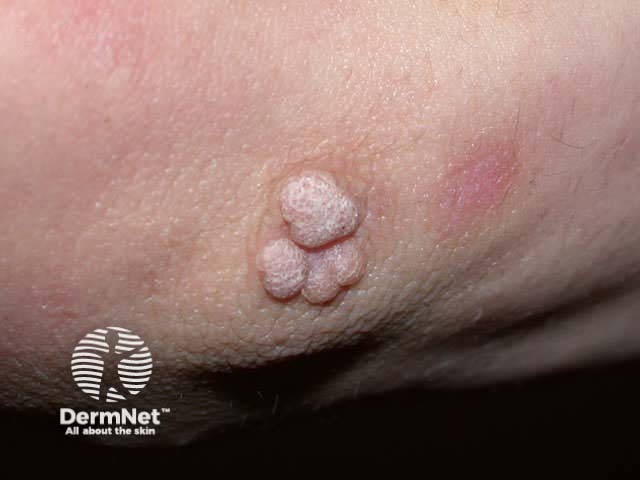
Common wart
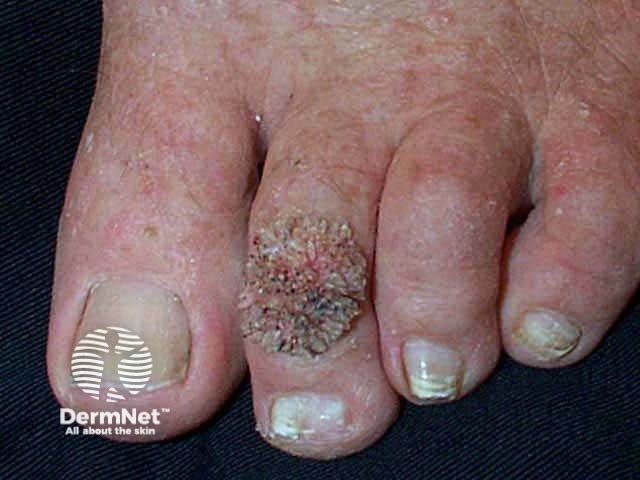
Cauliflower wart

Filiform wart
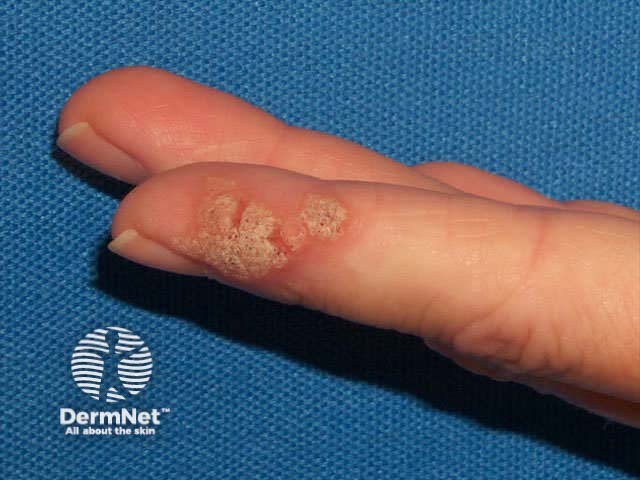
Palmar myrmecia

Palmar myrmecia

Mosaic warts
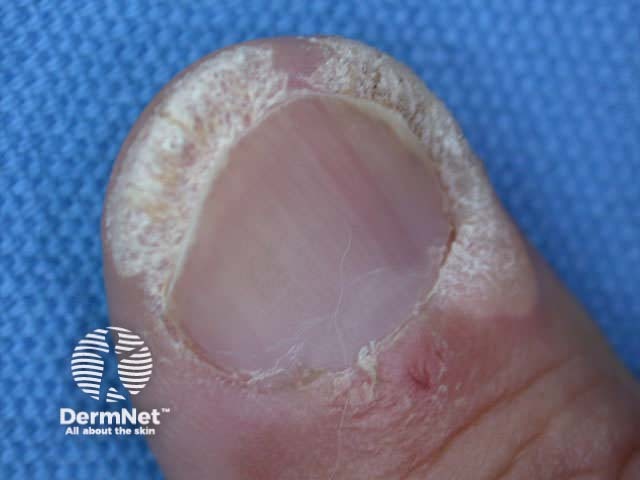
Periungual warts
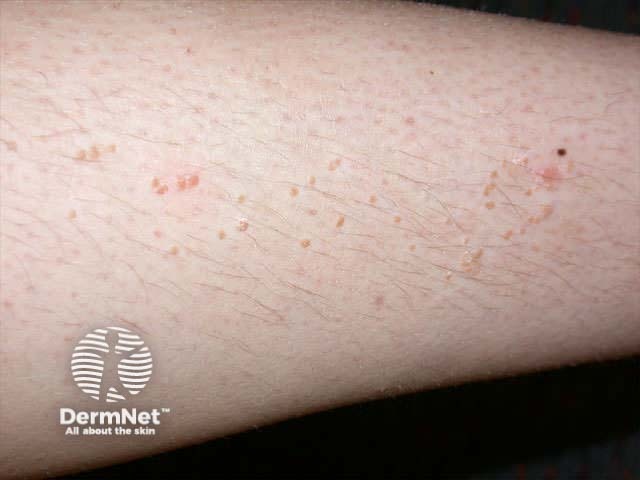
Plane (flat) warts

Koebnerised plane wart
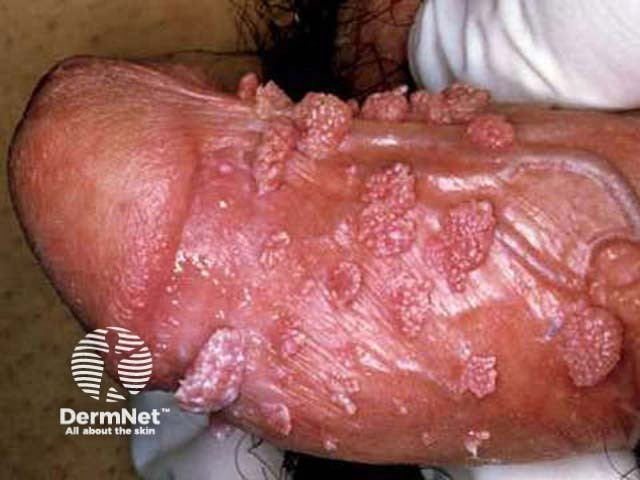
Condyloma acuminata
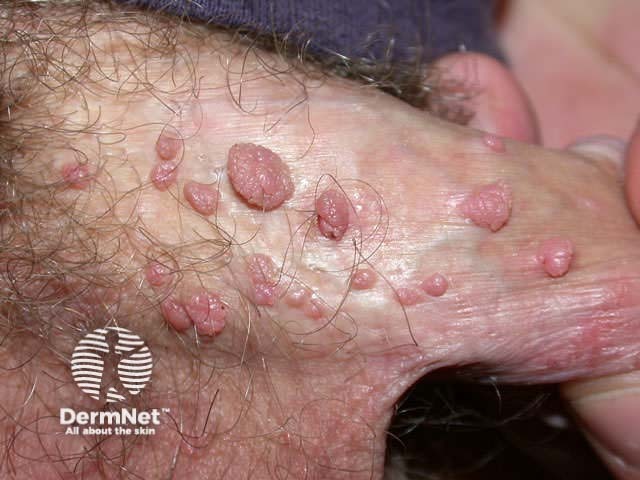
Condyloma acuminata

Genital-type warts on lips
Immunosuppression can result in malignant transformation of warts on non-genital sites, most commonly ten or more years after organ transplantation. Solar damage may be a cofactor.
Rarely, longstanding non-genital warts can cause verrucous carcinoma (large solitary well-differentiated squamous cell carcinoma usually found on the plantar surface).

Warts, actinic keratoses and squamous cell carcinomas in a transplant patient
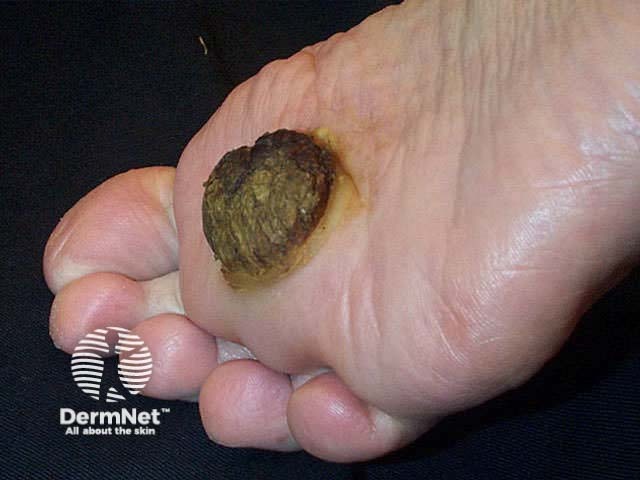
Verrucous carcinoma
Warts are diagnosed clinically. It may be helpful to pare the surface to reveal small black dots, which are thrombosed capillaries. Dermoscopy can be helpful for those who have had training in its use.
Occasionally a biopsy is necessary to confirm the diagnosis. The histological features are:
There are variations for different clinical subtypes.
Viral typing is rarely necessary or available. It requires viral DNA amplification using polymerase chain reaction followed by Southern blot hybridisation.
In children, even without treatment, 50% of warts disappear within 6 months; 90% are gone in 2 years. They are more persistent in adults but in most, they clear up eventually. Wart removal may stimulate an immune response; if not, recurrence is likely.
The most popular treatments include:
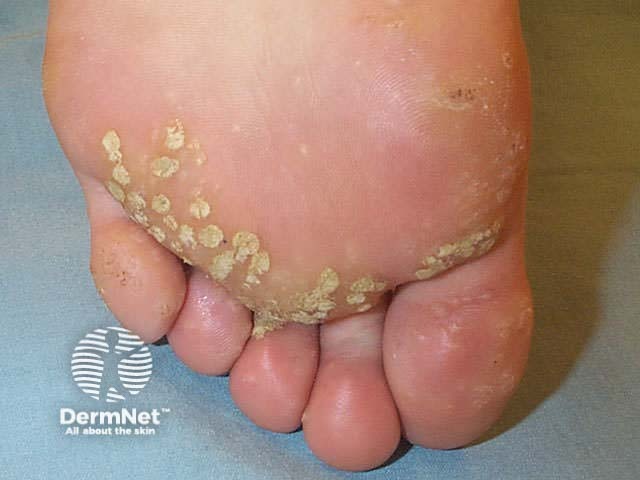
Salicylic acid treatment for warts
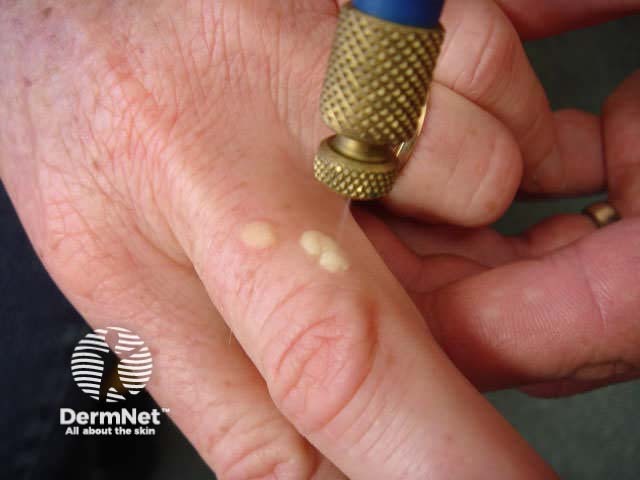
Cryotherapy for warts
How to use wart paint
Apply wart paint once daily. Persevere for twelve weeks or longer; up to 70% of warts will resolve with wart paints, and removing the keratinised surface relieves discomfort.
First, the skin should be softened in a bath or bowl of hot water. The hard skin should be rubbed away from the wart surface with a piece of pumice stone or emery board. The wart paint or gel should be applied accurately, allowing it to dry. It works better if covered with adhesive tape (particularly recommended when the wart is on the foot).
If the chemical makes the skin sore, stop treatment until the discomfort has settled, then recommence as above. Take care to keep the chemical off normal skin.
If simple treatments do not prove effective, there is little point in pursuing more elaborate and sometimes very expensive options as the success rates are little better. Most dermatologists in New Zealand advocate ‘benign neglect’ for extensive or longstanding warts that have failed wart paint and cryotherapy.
However, other preparations that may be applied by the patient include:
Systemic retinoids (acitretin and isotretinoin) are sometimes used for extensive warts. These may require a prescription by a dermatologist and have mucocutaneous and systemic side effects.
Potential risky procedures by a health practitioner are not necessarily recommended:
HPV vaccines in development have the potential to reduce the substantial morbidity and mortality associated with cervical cancer and other HPV-associated diseases. Large-scale efficacy studies that are planned or underway will provide additional information about vaccine tolerance and efficacy.
Determine the evidence that treatment of warts is effective.
Information for patients
See the DermNet bookstore.